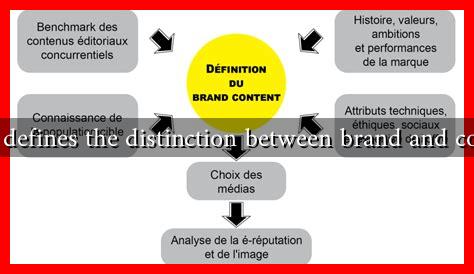-
Table of Contents
What Defines the Distinction Between Brand and Content
In the digital age, the terms “brand” and “content” are often used interchangeably, yet they represent distinct concepts that play crucial roles in marketing and communication strategies. Understanding the difference between the two is essential for businesses aiming to create a cohesive and effective marketing strategy. This article delves into the definitions, characteristics, and examples of brand and content, highlighting their unique roles in the marketplace.
Defining Brand
A brand is more than just a logo or a product; it encompasses the overall perception of a company in the minds of consumers. It is the emotional and psychological relationship that a business establishes with its audience. Key elements that define a brand include:
- Identity: This includes the visual elements such as logos, colors, and typography that represent the brand.
- Values: Brands often communicate their core values, which resonate with their target audience.
- Personality: A brand can have a distinct personality, whether it’s friendly, professional, or adventurous.
- Promise: The brand promise is what customers can expect from the brand in terms of quality and service.
For example, Apple is not just a technology company; it is a brand that represents innovation, quality, and a premium lifestyle. Its branding strategy focuses on simplicity and elegance, which is reflected in its products and marketing campaigns.
Understanding Content
Content, on the other hand, refers to the information and experiences that are created and shared to engage an audience. It can take various forms, including articles, videos, podcasts, social media posts, and more. The primary purpose of content is to inform, entertain, or educate the audience. Key characteristics of content include:
- Value: Effective content provides value to the audience, addressing their needs and interests.
- Engagement: Content is designed to engage the audience, encouraging interaction and sharing.
- Distribution: Content can be distributed across various platforms, including websites, social media, and email.
- SEO Optimization: Quality content is often optimized for search engines to increase visibility and reach.
A great example of effective content is HubSpot’s blog, which offers valuable insights on marketing, sales, and customer service. By providing high-quality content, HubSpot positions itself as a thought leader in the industry while also driving traffic to its website.
The Interplay Between Brand and Content
While brand and content are distinct, they are interrelated and work together to create a successful marketing strategy. Here’s how:
- Brand Storytelling: Content can be used to tell a brand’s story, helping to build emotional connections with the audience.
- Consistency: Consistent messaging across content reinforces brand identity and values.
- Audience Engagement: Engaging content can enhance brand loyalty and encourage repeat business.
- Lead Generation: Quality content can attract potential customers, leading them to engage with the brand.
For instance, Nike uses content marketing effectively by sharing inspiring stories of athletes and their journeys. This not only promotes their products but also reinforces their brand identity as a champion of sports and perseverance.
Statistics Highlighting the Importance of Brand and Content
Understanding the significance of brand and content can be further emphasized through statistics:
- According to a study by Statista, the top 10 global brands are valued at over $1 trillion.
- Content marketing generates three times more leads than traditional marketing, as reported by the Content Marketing Institute.
- Brands that engage in storytelling can increase their sales by up to 30%, according to research by Forbes.
Conclusion
In summary, while brand and content are often conflated, they serve different purposes in the marketing landscape. A brand represents the identity and values of a company, while content is the medium through which those values are communicated and engaged with. By understanding the distinction and interplay between brand and content, businesses can create more effective marketing strategies that resonate with their audience, foster loyalty, and drive growth. As the digital landscape continues to evolve, the importance of both brand and content will only increase, making it essential for marketers to master both elements.

